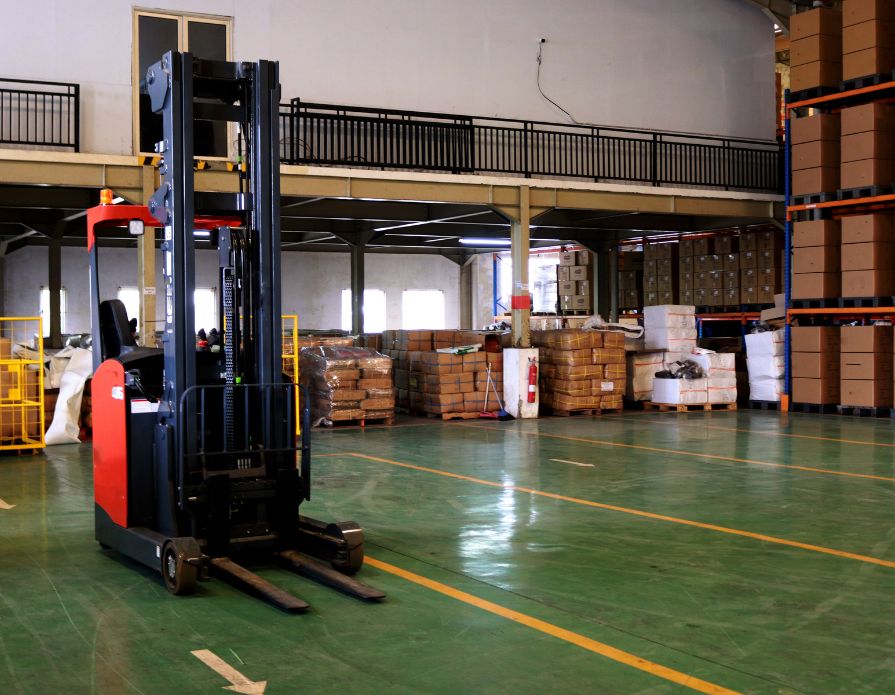3 Ways Electric Forklifts Make Warehouses More Sustainable
The choice between internal combustion (IC) and electric forklifts for warehouses affects not only operational efficiency but also environmental sustainability and long-term costs. IC forklifts, often powered by diesel or gas, offer high power and are suitable for heavy lifting and outdoor use, but they emit pollutants and generally have higher fuel and maintenance costs.
In contrast, electric forklifts provide a cleaner, quieter alternative with lower operating costs and reduced environmental impact. Explore three ways electric forklifts make warehouses more sustainable.
Reduced Emissions
One of the ways businesses can reduce deforestation is by minimizing their carbon footprint. By powering forklifts with lithium-ion or lead-acid electric batteries, warehouses lower their CO2 emissions. Electric batteries store energy generated from a variety of sources, including renewable energy, which can have a much lower carbon footprint than the direct combustion of diesel or gasoline in traditional forklift engines.
Traditional IC engine forklifts rely on fossil fuels such as gasoline or diesel, resulting in the release of significant CO2 emissions during their operation. These emissions not only contribute to the worsening of global warming but also diminish the air quality in and around the warehouse facilities. In contrast, electric forklifts sidestep this issue by utilizing clean energy sources, thus avoiding the direct release of greenhouse gases associated with their internal combustion counterparts.
Easier Maintenance, Lower Consumption
Warehouses can maneuver around the conventional hurdles of intensive forklift maintenance by switching to electric models. Electric forklifts require less maintenance than IC forklifts due to their simpler mechanical design and fewer moving parts. The electric motor in an electric forklift experiences less wear and tear compared to the complex engines in IC forklifts, which involve combustion processes and require regular maintenance tasks such as oil changes, fuel filter replacements, and exhaust system repairs.
Electric forklifts reduce the consumption of various resources, such as engine oil and replacement parts, which are often produced and disposed of in environmentally harmful ways. Decreasing the consumption of replacement parts lessens waste generation and cuts down on the energy and raw materials needed for their production, further diminishing the environmental footprint of warehouse operations.
While electric forklifts don’t go through replacement parts as frequently as traditional IC forklifts, regular maintenance is still key for preserving forklift batteries and protecting the environment. For example, proper charging prevents damaging the battery cells and ensures the battery operates efficiently for longer. This and other maintenance tasks reduce the frequency of battery replacement and lessen the impact associated with battery production and disposal.
Longevity and Recyclability
Durability is a hallmark of electric forklifts, ensuring a longer lifespan and a more sustainable cycle of use. Their robust electric motors and simplified mechanical components guard against the wear and tear that challenges traditional forklifts, exemplifying how sustainable products can deliver superior performance over time.
When electric forklifts do reach the end of their service life, businesses can often recycle their parts, including the batteries. Recycling diverts waste from landfills and promotes a circular economy that reduces the overall demand for virgin resources.
Electric forklifts make warehouses more sustainable by reducing emissions, lowering maintenance and resource consumption, and offering a longer, recyclable service life. These benefits can enhance operational efficiency and lower costs, so consider making electric forklifts a part of your business’s sustainability strategies.

I love how you explained this content. Thank you, it helps me a lot.